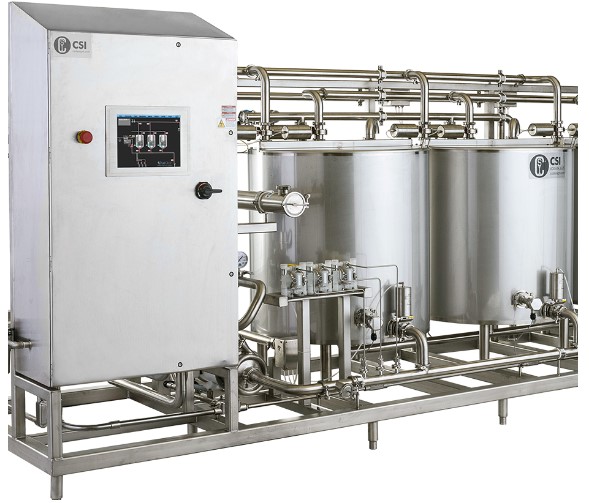Clean-in-Place (CIP) vs. Clean-out-of-Place (COP)
Clean-in-Place (COP):
- Definition: CIP refers to the cleaning of equipment and systems while they are still assembled and in place, without disassembly or removal from the production line.
- Process: CIP involves circulating cleaning solutions, detergents, and sanitizing agents through the equipment or system using dedicated cleaning circuits and nozzles. The cleaning solutions are typically heated and circulated at specific flow rates and pressures to ensure thorough cleaning and removal of residues.
- Automation: CIP is often automated, with programmable logic controllers (PLCs) or other control systems managing the cleaning process. This allows for consistent and repeatable cleaning cycles with predefined parameters.
- Advantages: CIP minimizes the need for manual intervention and reduces downtime associated with equipment disassembly and reassembly. It provides efficient cleaning while preserving the integrity of the equipment or system.
- Limitations: CIP may not be suitable for equipment with complex designs, narrow passages, or areas that are difficult to access. It may also be less effective for removing certain types of stubborn or adherent residues.

Clean-out-of-Place (COP):
- Definition: COP involves removing equipment or components from the production line and transferring them to a dedicated cleaning area or washing station for thorough cleaning and disinfection.
- Disassembly: COP requires the disassembly of equipment, such as removing parts, valves, filters, or other components that come into contact with the product or process. These disassembled parts are cleaned separately.
- Manual Cleaning: In COP, the disassembled equipment or components are manually cleaned using appropriate cleaning agents, brushes, scrubbers, or other cleaning tools. Cleaning may involve immersion, spraying, or other techniques.
- Inspection and Verification: COP allows for closer inspection of individual components to ensure proper cleaning and removal of residues. It also facilitates visual inspection for damage, wear, or other issues that may require maintenance or replacement.
- Advantages: COP offers more flexibility in cleaning various equipment and components, especially those with intricate designs or hard-to-reach areas. It allows for thorough cleaning and visual inspection of individual parts.
- Limitations: COP generally requires more manual labor, time, and resources compared to CIP. It may result in longer equipment downtime, especially if the disassembly and reassembly processes are complex.
Both CIP and COP have their respective advantages and limitations, and the selection of the appropriate method depends on factors such as equipment design, cleaning requirements, and operational considerations in the pharmaceutical industry.